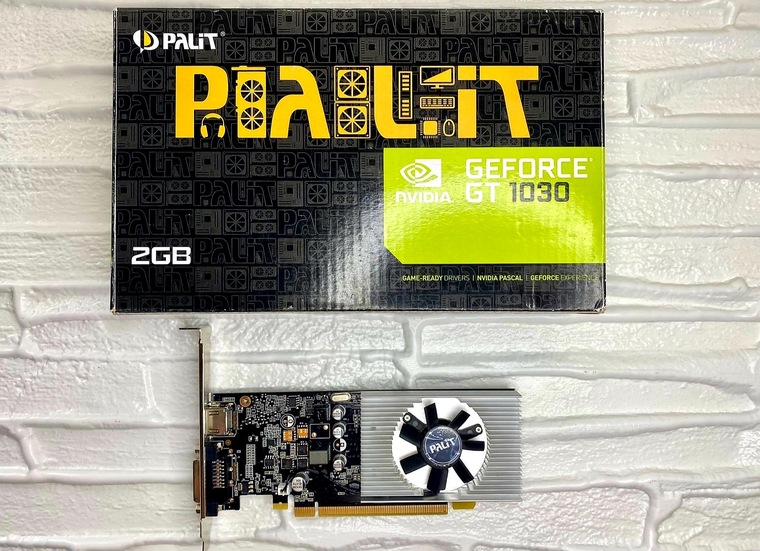Review of the video card Palit GeForce 1030 | Reviews| Reviews
There are a large number of video cards on the market for a variety of user tasks. Most of them are tailored for games. Once upon a time Palit GeForce 1030, which I will be reviewing today, could also be called a gaming one. Therefore, it is interesting to check what she is capable of now in 2021 after so much time.
Specifications
GPU – NVIDIA GeForce GT 1030
Manufacturer’s code – NE5103000646-1080F
Interface – PCI-E 4x 3.0
GPU Codename – GP108-300-A1
Process technology – 14 nm
Number of monitors supported – 2
Maximum resolution – 4096×2160
GPU frequency – 1227 MHz
Video memory capacity – 2048 MB
Video memory type – GDDR5
Video memory frequency – 6000 MHz
Video memory bus width – 64 bit
Connection
Connectors – DVI-D, HDCP, HDMI
HDMI version – 2.0b
Standards support – DirectX 12, OpenGL 4.5
additional characteristics
CUDA support – yes
Recommended power supply unit – 300 W
TDP – 30 watts
Number of fans – one
Form Factor – Low Profile
Dimensions (WxHxT) – 168x69x20 mm
Number of occupied slots – one
Equipment
The packaging of the video card is made in a dark color. The box itself is quite dense, and on its reverse side you can find a complete list of its modest system requirements and technical capabilities.
The video card is sealed in a dark anti-static bag for better safety. Also, the delivery set is invariably accompanied by a CD with software and instructions for use.
Dignity
The first thing among the advantages of Palit GeForce 1030 is its relatively small size, thanks to which the video card can easily fit into one expansion slot on the motherboard. Knowing what size modern video cards are in terms of compactness, this has an advantage in this case.
Despite the fact that the card is very entry-level and has only 2 gigabytes of GDDR4 video memory, it may well be enough for weak and undemanding computer games in the budget segment. I will demonstrate this later in the tests. It also fits perfectly into an office computer for undemanding tasks. Because, unlike the integrated graphics modules of some processors, the Plait GeForce 1030 is more powerful and more reliable. Therefore, I do not advise you to save money and choose processors with integrated graphics cores. It is better in this case to pay a little extra and take something more powerful and better.
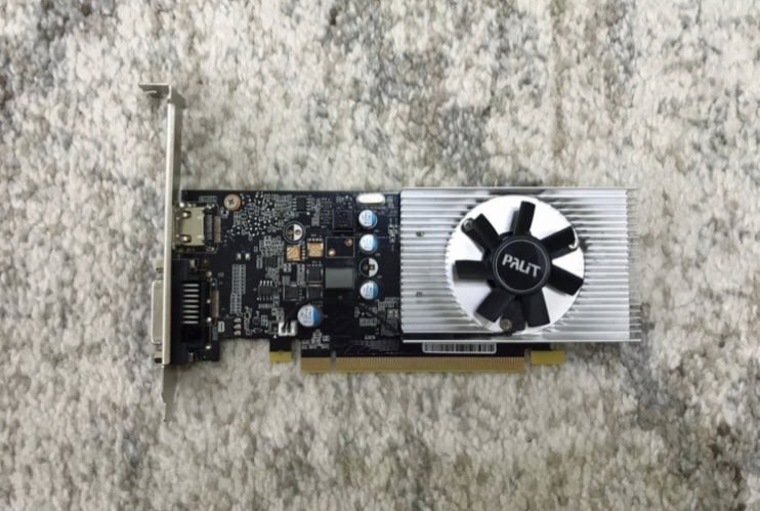
She also has a price tag corresponding to the entry level and this is a significant advantage compared to older brothers. Especially in the mining boom. At the moment, it can be purchased for 7,000 rubles. I would like it even cheaper, but this price is quite acceptable for the most budget gaming.
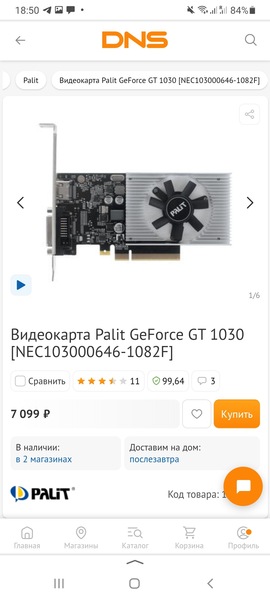
The mechanical Pcie x8 will also be a plus, especially for server solutions, and the quiet operation of the video card even under stress. Everything here is individual, since some users overestimate their expectations and require almost silent operation from a solution for 7 thousand rubles. Such indicators will be if you use the map sparingly, for example, for surfing the web or in games like the old GTA San Andreas. With such tasks, the card works perfectly and almost silently.
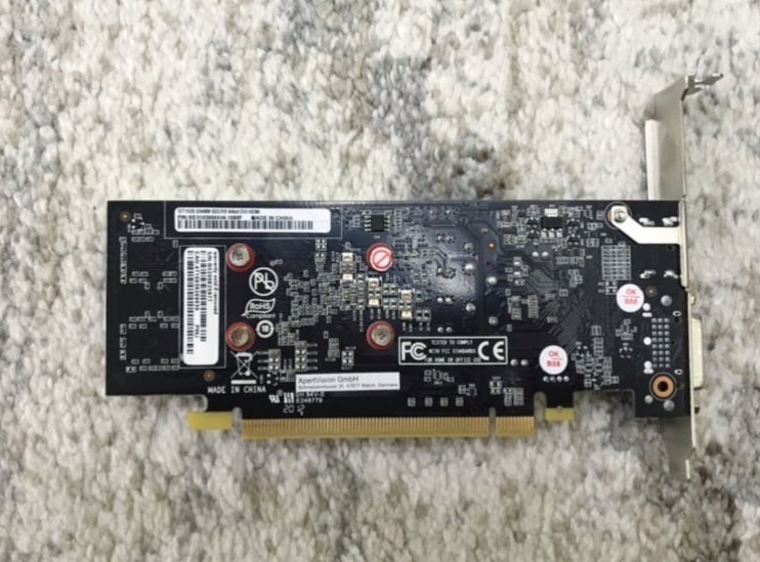
As for the picture quality, I really liked it. Video content can be watched in high definition, without freezes, lags, etc.
disadvantages
Let’s move on to the cons of this model. I have already mentioned that the video card has the GDDR 4 memory type. Today there are solutions with the GDDR5 type, which do not differ much in price, but the performance will give you relatively higher performance.
Slight heating of the video card with relatively weak tasks. This applies for most of the games, since the temperatures are quite low when surfing the web.
Also, I absolutely do not like its design. This, of course, is a matter of taste, but for aesthetes it can be a problem. The map looks crude, boring and uninteresting.
Performance tests
The most interesting, as always, I decided to leave for last. Testing the card in games and comparing it with its counterpart from MSI. I monitored the overclocking of video cards, temperatures and rotations of the cooling fans using the utility from MSI Afterburner 4 version. And I also monitored the operation of accelerators during overclocking of video cards, as well as the temperature using the Heaven Benchmark program.
I note right away that the developers decided to leave the reference frequencies untouched. Hence, the core frequency is 1228 MHz, and the memory frequency is 1500 MHz.
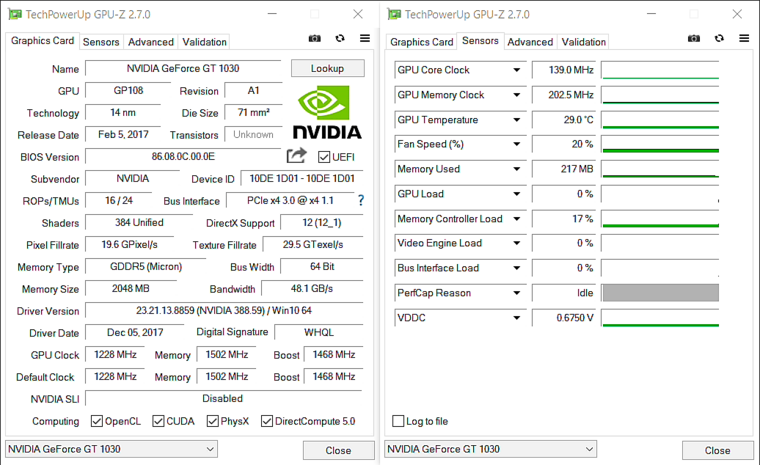
The cooling system overall worked at 20 percent, but even under these non-critical loads, it was surprisingly slightly noisier than the MSI 1030. Temperature indicators of the graphics core began to approach closely to 29-30 degrees.
Next, I would like to demonstrate the performance of a similar model from MSI. An interesting fact is that the Palit tests showed a significant difference, since the video card barely reached 56 degrees in load, thus providing a noticeable “gap” of 20 degrees with the model from MSI. Moreover, even after repeated testing, these indicators remained. The Palit version was boosted to 1740 MHz.
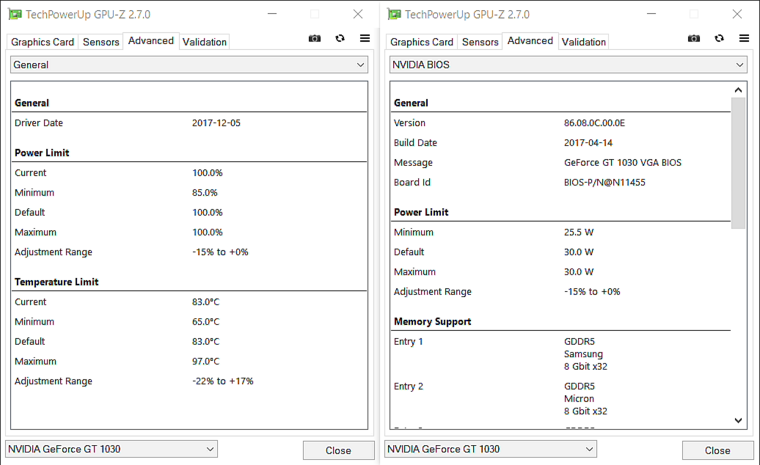
A decrease in temperature indicators was achieved by increasing the speed of rotation of the impeller up to 100 percent. At the same time, the noise level increased as on old office solutions. Overall, the overclocking of the Palit GeForce 1030 was much better, which can be seen in the final test results.
Now I’ll tell you a little about test games. I have already mentioned in the review that the GeForce 1030 will be a good solution for gaming for not very “heavy” games. Actually, I conducted the tests in the following:
1.Dota 2
2.World of Tanks
3.Rust
4.CS: GO
So, the first test game was Dota 2. The card coped with it quite easily. The average frame rate was in the 65-70 fps range.
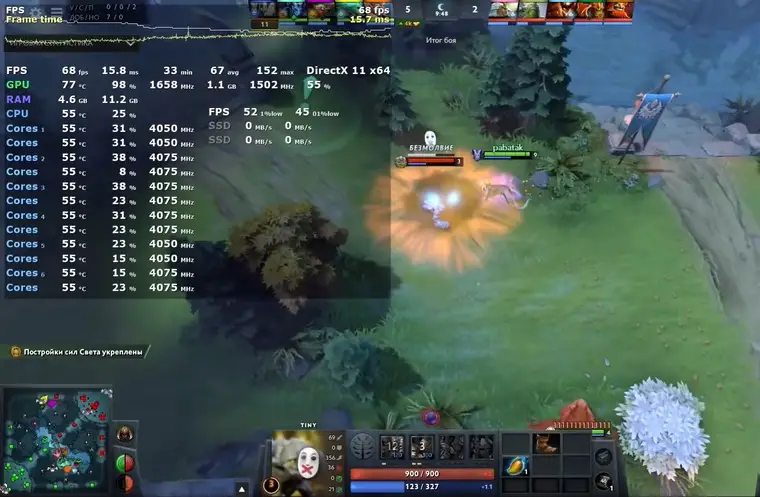
Then everyone’s favorite World of Tanks was tested. I set the graphics settings high. Average indicators also varied around 60 fps with very rare drawdowns up to 25-30 fps. Also some friezes were noticeable during special effects, but not critical.
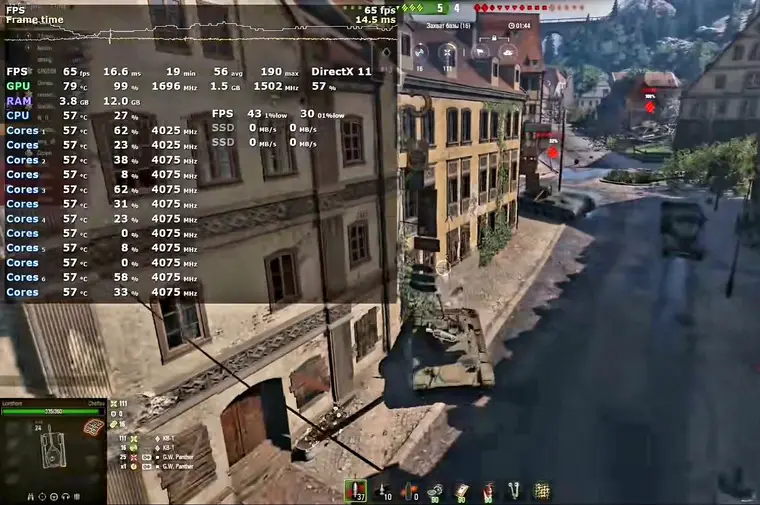
Rust showed average results of 35-40 fps. The picture is not terrible, but still rather weak in my opinion. In general, playable, but not very comfortable.
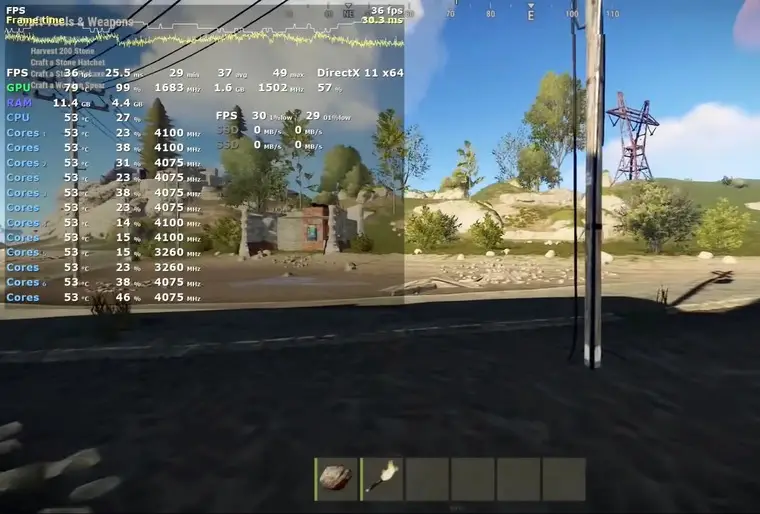
In CS: GO, a lot depends on the game mode. Since in the most difficult of them – danger zone – we had to set already medium settings and achieve the desired 60 frames per second. Also, it was not without friezes, but I will not say that it very much interferes or distracts.
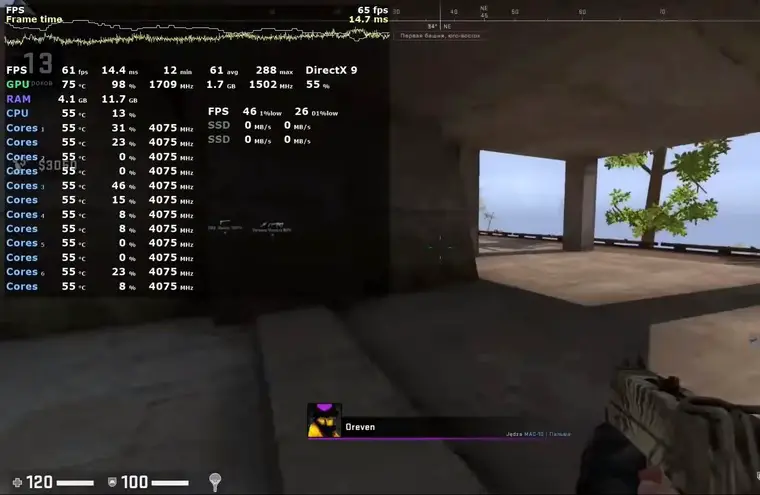
Outcomes
So, everything in tests, I hope, showed. I would recommend it for office builds or budget gaming. If it is possible to take with the type of memory GDDR 5, it would be better to take it. Overall, a good entry-level solution from Palit.





